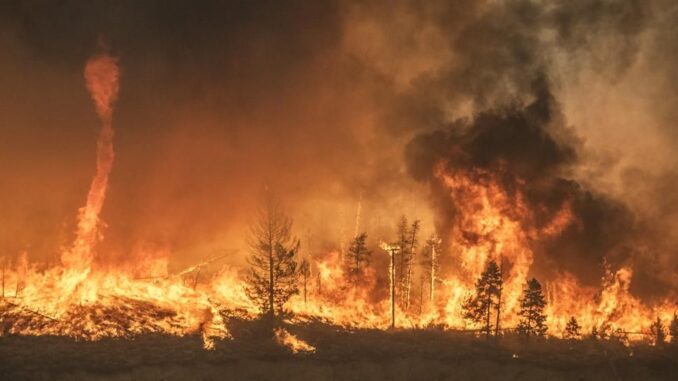
According to a new CU Boulder-led analysis, fast-growing fires accounted for roughly 90% of fire-related damages in the United States between 2001 and 2020, despite being relatively rare. “Fast fires,” which send embers into the air ahead of swiftly developing flames, can ignite homes before emergency responders arrive.
The study, published today in Science, found that these fires are spreading faster in the Western United States, putting millions of people at risk. The study identifies a key gap in hazard preparedness across the United States: national-level fire risk assessments do not account for fire speed or provide guidance on how individuals and communities may better prepare for rapid fire growth events.
The study identifies a key gap in hazard preparedness across the United States: national-level fire risk assessments do not account for fire speed or provide guidance on how individuals and communities may better prepare for rapid fire growth events.
“We hear a lot about megafires because of their size, but if we want to protect our homes and communities, we really need to appreciate and prepare for how fast fires move,” said Jennifer Balch, the study’s lead author, a CIRES fellow and associate professor of geography. “Speed matters more for keeping people safe.”
Balch and her colleagues were inspired to investigate fire speed after the Marshall Fire, which destroyed over 1,000 homes in Boulder County, Colorado, in December 2021. The fire burned fewer than 6,100 acres (24.7 square kilometres), but it spread swiftly due to a combination of dry weather and strong winds. Less than an hour after the fire was detected, it had spread to a town 3 miles (4.8 km) away, forcing the evacuation of tens of thousands of people. In the aftermath, Balch’s team was keen to learn about how fire growth rates affect fire risk across the country.The researchers used satellite data to examine the growth rates of over 60,000 fires in the contiguous United States from 2001 to 2020. Using a cutting-edge algorithm that applies a series of calculations to each satellite pixel, scientists discovered and documented the perimeter of each fire for each day it was active.
“Until now, we had scattered information about fire speed,” said Virginia Iglesias, Earth Lab’s interim director and research co-author. “We harnessed Earth observations and remote sensing data to learn about fire growth across the nation in a systematic manner.” The researchers used fire perimeter maps to calculate each fire’s growth rate as it advanced. They then focused on the quickest fires, which spread over 4,003 acres (16.2 square kilometres) in a single day, and investigated how the top growth rates altered over time. The investigation found that the average maximum growth rate of the quickest flames in the Western United States increased by 250 percent over the last two decades.
“Fires have gotten faster in the western U.S. in just a couple of decades,” Balch said reporters. “We need to focus on what we can do to prepare communities: hardening homes and making robust evacuation plans.” To assess the effects of fast flames on people and infrastructure, the researchers compared the growth rates of the quickest fires to data from incident reports on the number of structures damaged or destroyed per fire occurrence.
They discovered that quick fires damaged 88 percent of the dwellings between 2001 and 2020, although accounting for only 2.7 percent of all fires on record. Fires that damaged or destroyed more than 100 structures had peak fire growth rates of over 21,000 acres (85 square kilometres) in a single day.
“These results change how we think about wildfire risk because they position growth rate as a key determinant of a fire’s destructive potential,” the researcher added. The work also identifies a key risk assessment gap. National wildfire risk models include parameters for area burned, intensity, severity, and chance of occurrence, but generally do not include growth rate or other metrics of fire speed.
As a result, government organisations and insurance firms that utilise these models miss out on critical knowledge about how fires spread, which homeowners may use to better safeguard themselves and their communities. The writers argue that this should change.
“When it comes to safeguarding infrastructure and orchestrating efficient evacuations, the speed of a fire’s growth is arguably more critical than its sheer size,” she said.

Leave a Reply